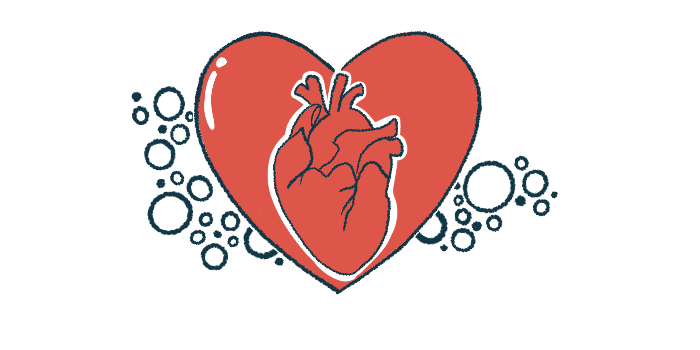Cardiac MRI may help assess gene therapy efficacy in IOPD: Case
Test confirms improvements seen in boy, 1, with infantile-onset Pompe
Written by |

A 1-year-old boy with infantile-onset Pompe disease (IOPD) showed improved muscle strength and signs of less heart inflammation four months after receiving gene therapy, according to a case report.
The findings in this case were confirmed with cardiac MRI, a noninvasive test that uses radio waves and magnets to create detailed images of the heart and blood vessels. The imaging scan does not use radiation.
According to the scientists, this case highlights how important a cardiac MRI can be for “assessing the efficacy of gene therapy and monitoring [heart muscle] alterations in Pompe disease.”
The team called it “a promising avenue for evaluating treatment efficacy.”
The report, “Assessing Gene Therapy Efficacy in Infantile-Onset Pompe Disease: Myocardial Native T1 Values of CMR,” was published in JACC: Case Reports.
Infant in China diagnosed with IOPD at age 4 months
In Pompe disease, mutations in the GAA gene result in no or a faulty acid alpha-glucosidase (GAA) enzyme. The function of that enzyme is to break down a complex sugar molecule known as glycogen. Without a working GAA, glycogen accumulates to toxic levels in lysosomes, cells’ recycling centers, leading to Pompe symptoms.
Infantile-onset Pompe, which can be classic or nonclassic depending on the disease features, is characterized by progressive muscle weakness. Cardiomyopathy, or disease of the heart muscle, is common in the classic type of IOPD and usually becomes apparent in the first weeks of life.
Enzyme replacement therapy, known as ERT, is a mainstay treatment for Pompe that aims to supply patients with a working version of GAA. However, it requires lifelong, regular infusions, and it may not work well for everyone.
Gene therapy is an experimental treatment approach that’s basically designed to restore the body’s ability to produce a functional GAA enzyme. It works by providing cells with a healthy version of the GAA gene.
In this report, researchers in China described the case of a young boy with IOPD who received gene therapy. From birth, he showed feeding difficulties, difficulties in gaining weight, severe crying, and a bluish discoloration around the mouth.
At 3 months of age, an ultrasound of the heart revealed an enlarged heart muscle. One month later, genetic tests confirmed mutations in GAA. He was diagnosed with IOPD and started ERT immediately. The boy was then referred for gene therapy.
Cardiac MRI used to examine heart before and after gene therapy
At admission to the hospital, a physical examination revealed a heart murmur and low muscle strength affecting the limbs.
A cardiac MRI showed severe thickening of the heart’s ventricles — the pumping chambers — particularly of the muscle dividing the ventricles. The left ventricle showed a mild increase in movement, and its ejection fraction was high at 89%, a possible sign of hypertrophic cardiomyopathy. That condition occurs when the heart becomes enlarged and cannot pump blood properly. Ejection fraction is a measurement of how much blood the left ventricle pumps out with each contraction.
The infant also had liver dysfunction and abnormal levels of heart enzymes.
Following a thorough evaluation, he received gene therapy.
Four months later, the patient showed improvements in muscle strength of the arms, with physical and heart ultrasounds remaining unaltered.
[This case report] presents a comprehensive assessment and management of IOPD, with particular emphasis on the role of [cardiac MRI] in monitoring treatment response.
An MRI of the heart muscle then showed reduced native T1 values, a marker of tissue health, which could indicate less inflammation. This was accompanied by smaller abnormal regions but a similar ejection fraction.
Overall, this case report “presents a comprehensive assessment and management of IOPD, with particular emphasis on the role of [heart MRI] in monitoring treatment response,” the researchers wrote.
The team noted that cardiac MRI has been shown to be “more reliable and accurate than echocardiography, especially for assessing cardiac structure and function.”
Overall, according to the researchers, the observed reduction in native T1 values supports the potential of cardiac MRI to evaluate gene therapy effectiveness and heart muscle scarring in IOPD patients.







